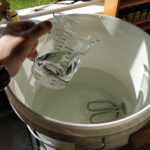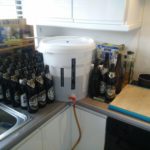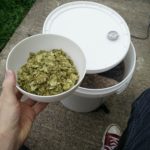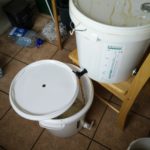Calibrating brewing equipment

Hypothesis As per my previous post about reviewing my red ale recipe, the question arose as to whether I was measuring my volumes correctly in the fermenter and kettle. I decided to test this and calibrate the markings on same. Method I filled an IKEA 1L jug up to the 1L graduation and poured it into both the kettle and fermenter until each was full. After each 1L was added, a new graduation line was drawn on the side of the vessel using permanent marker. Results The difference between the sticker on the vessel was pronounced – accounting for a 2L difference in measured volume. I brewed another batch of the same recipe and obtained a batch size of 22L – 5L more than the previous batch. Conclusion These markings are more accurate than the previous ones. This should allow me to follow recipes more accurately. Obviously, accuracy could be improved – I didn’t allow for the temperature of the water affecting the volume and the IKEA jug is probably not the most accurate of measuring tools – but I’m happy with this improvement for now.


